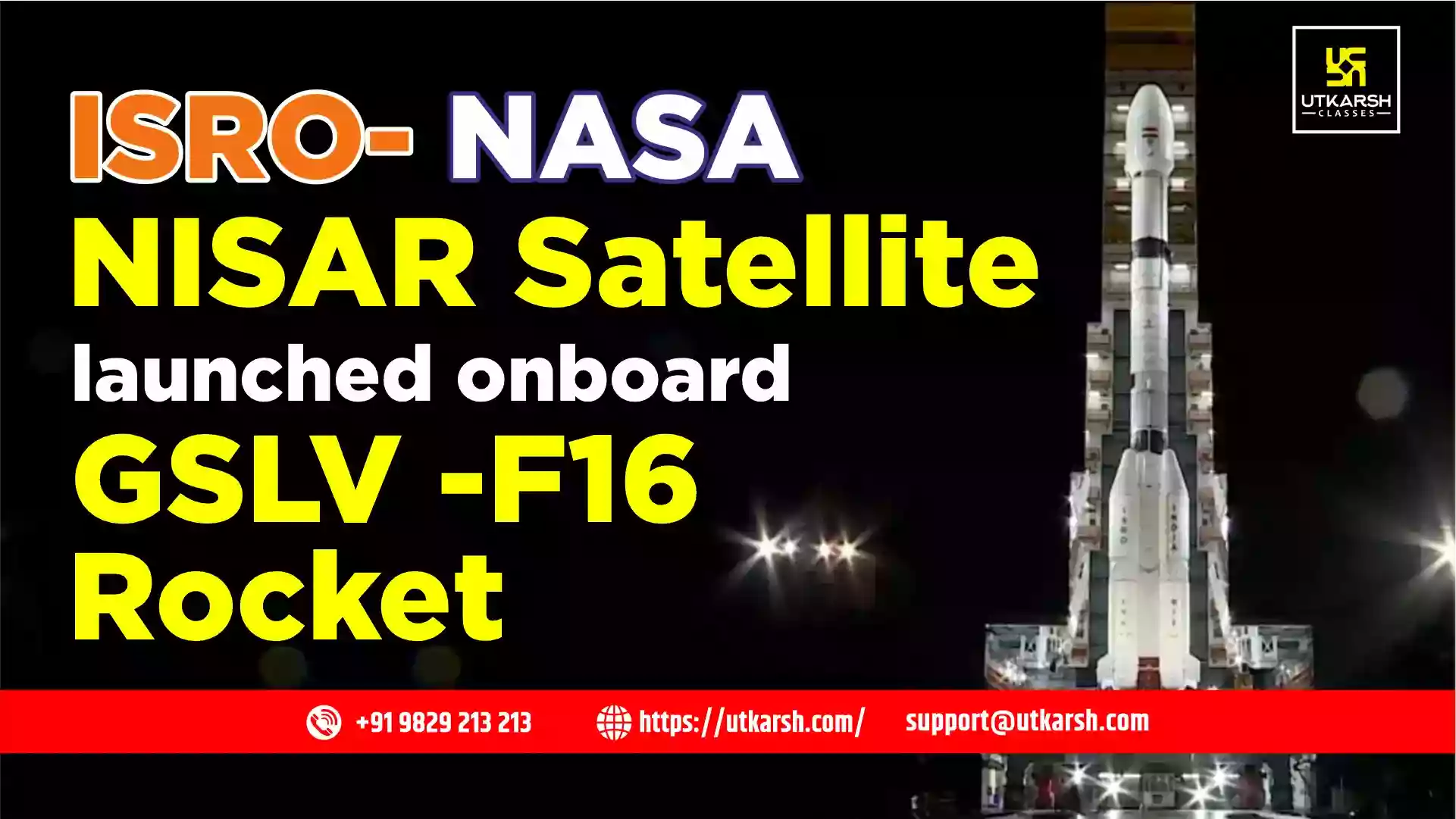Ready to learn?
Take the first step toward achieving your educational goals. Whether you’re preparing for exams or expanding your knowledge, getting started is just a click away. Join us today and unlock your full potential
832, utkarsh bhawan, near mandap restaurant, 9th chopasani road, jodhpur rajasthan - 342003
support@utkarsh.com
+91-9829213213
Support
Learning Resources
Government Exam
Nursing
Agriculture
NEET/JEE
Engineering

© 2025 Utkarsh Classes & Edutech Pvt. Ltd. All Rights Reserved
Home
International Current Affairs
International Organisations
ISRO-NASA Earth Observation Satellite NISAR Launched from Sriharikota

Utkarsh Classes
Updated: 31 Jul 2025
3 Min Read

Table of Content
The Indian Space Research Organisation (ISRO) successfully launched the NASA-ISRO Synthetic Aperture Radar (NISAR) Earth Observation Satellite (ESO) from Sriharikota, Andhra Pradesh, on July 30, 2025. The $1.5 billion NISAR mission, jointly executed by ISRO and the National Aeronautics and Space Administration (NASA) of the United States of America, marks the first collaboration between the two countries space agencies in space hardware.
The 2,393-kg NISAR satellite is the world’s first dual-frequency synthetic aperture radar satellite. It carries both L and S band synthetic aperture radar.
It was a joint collaborative venture of ISRO and NASA in space hardware for the first time.
NASA built the L-band radar, GPS receiver, 12-meter deployable antenna and a high-rate telecom system.
ISRO built the S-band radar and the spacecraft bus.
The integration of the Indian and the NASA-built components was integrated and tested at NASA facilities, and then the satellite was handed over for final launch to ISRO.
The satellite will have a life span of 5 years.
The satellite is an Earth observation satellite that will capture the Earth's land and ice-covered surfaces, including islands, sea ice and selected oceans every 12 days.
The satellite will study land ecosystems, land & ice deformation, and oceanic regions of common interest to the US and Indian science communities.
It will also help:
The NISAR satellite was launched by ISRO’s GSLV-F16 Mk-II from ISRO’s Satish Dhawan Space Centre (SDSC), also known as Sriharikota High Altitude Range (SHAR), located in Sriharikota, Andhra Pradesh.
The Geosynchronous Satellite Launch Vehicle Mark II (GSLV Mk II) has been developed by ISRO and is a three-stage rocket with four liquid strap-ons.
The upper stage consists of an indigenously developed cryogenic engine.
The GSLV-MkII rocket is capable of placing heavier satellites in geostationary orbit.
The GSLV-F16 Mk-II placed the NISAR satellite in a 747-kilometre Sun-synchronous Polar Orbit.
It was the 18th mission of the rocket and the 12th mission using an indigenous cryogenic stage.
Established--15 August 1969
It is India’s premier space research organisation.
Headquarters: Bengaluru, Karnataka
Chairman: V Narayanan
Established -1958 by the United States government.
World’s premier space agency, engaged in space exploration and research.
NASA launches its space rockets from the Cape Canaveral Space Force Station or Kennedy Space Centre, near Tampa Bay in Florida.
Headquarters: Washington, D.C
Administrator- Sean Duffy(Acting)
Top Posts

Get 5 Questions Daily to boost your exam preparation
Apni selected pariksha se juden exam oriented 5 prashn rozana paayen.
Frequently asked questions

Still have questions?
Can't find the answer you're looking for? Please contact our friendly team.
Visit an Offline Centre Near to You.